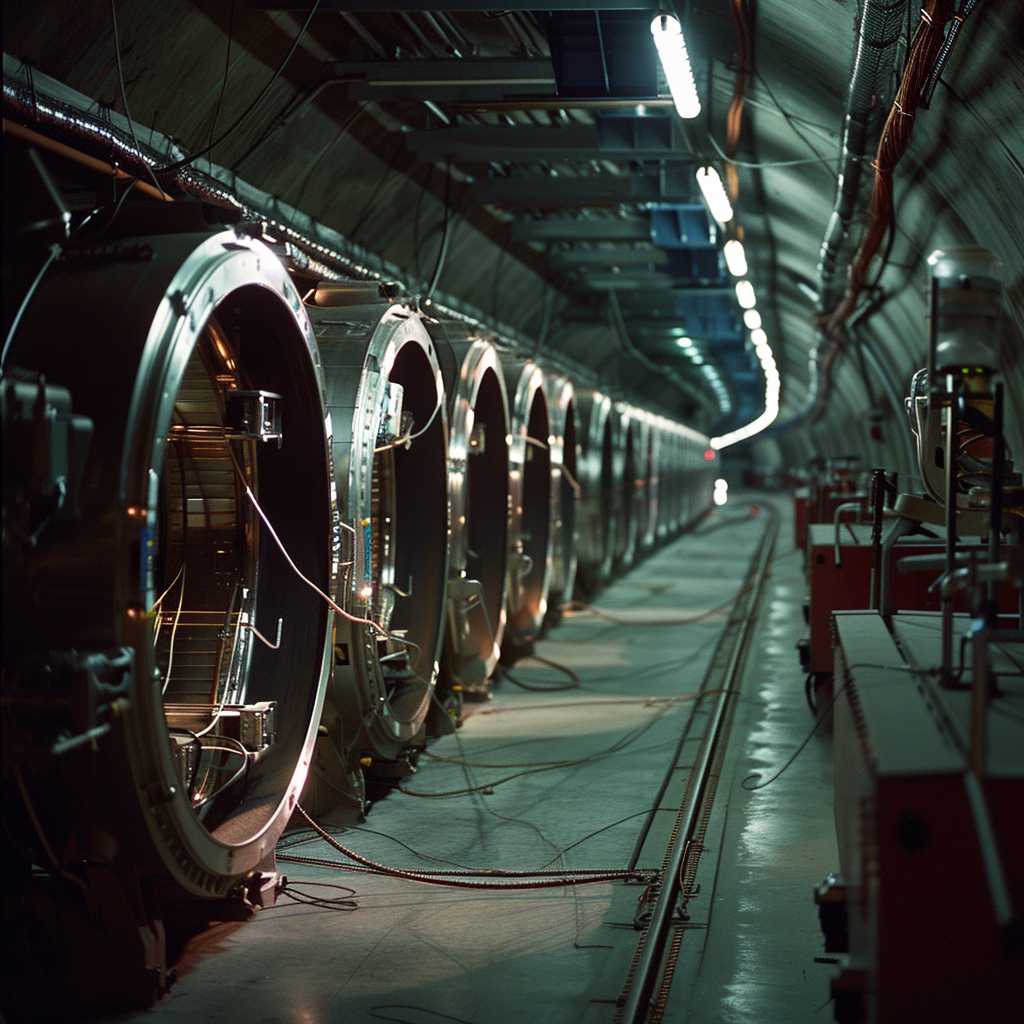CERN: Advancing Human Knowledge through Particle Physics
Founded in 1954, the European Organization for Nuclear Research, better known as CERN, represents one of the most significant scientific research centers in the world. Nestled near Geneva, on the border between France and Switzerland, CERN operates the largest particle physics laboratory globally and is dedicated to probing the fundamental structure of the universe. Through its diverse array of accelerators and collaborations, it helps to uncover the mysteries of the cosmos, advancing our understanding of physical laws, and fostering international cooperation in scientific research.
The Genesis and Growth of CERN
In the post-World War II era, Europe was determined to compete with the United States and Soviet Union in the field of scientific research. The conception of CERN was rooted in the necessity for collaborative effort, aimed at rebuilding European scientific capabilities and facilitating dialogue across fractured political borders. With 12 founding member states, CERN became a reality, embarking on its mission to conduct high-level research into particle physics.
The growth of CERN is evident in its infrastructure and reach. Throughout the decades, CERN has continuously upgraded its facilities and expanded its membership now encompassing over 20 member states. From early accelerators like the Synchrocyclotron (SC) and Super Proton Synchrotron (SPS) to the modern-day marvel that is the Large Hadron Collider (LHC), CERN has seen significant developments in its research capabilities.
The Infrastructure: A Haven for High-Energy Physics
At the heart of CERN’s operation is a complex of powerful particle accelerators, among which the LHC is paramount. The LHC is currently the world’s largest and most powerful particle collider – essentially a 27-kilometre ring of superconducting magnets with numerous accelerating structures to boost the energy of particles along the way. This incredible machine enables scientists to propel protons or ions to near light speeds before collisions occur.
Such infrastructure supports a wide range of experiments looking for new particles and investigating the fundamental forces that govern our universe. It’s within these accelerators that particles are smashed together to reveal smaller, more elementary constituents or novel phenomena.
Scientific Achievements at CERN
Over its history, CERN has been crucial to a number of milestone scientific discoveries. Perhaps most notable was the 2012 discovery of the Higgs boson — often referred to as the “God particle” — which provided evidence for the field that gives particles mass, using data from experiments at the LHC. It was a pivotal moment that significantly propelled theoretical and practical physics forward.
However, CERN’s contributions are not limited to theoretical advancements. The World Wide Web was also birthed here in 1989 as a means to improve information sharing among scientists participating in different international collaborations.
Societal Influence and Contributions
Beyond purely academic or experimental physics, CERN’s innovations have had considerable knock-on effects for wider society. For instance, technologies developed at CERN have found their way into medical applications; such as positron emission tomography (PET) scans and other imaging technologies. Additionally, developments in data handling by scientists dealing with immense volumes of data generated by collisions has spurred on innovations in computer science including improvements to cloud computing and grid technology.
Education and Outreach
CERN also plays a vital role in education, offering various programs aimed at students at various levels and researchers starting their careers in physics and engineering disciplines. Its initiatives help spread knowledge about particle physics and inspire future generations in pursuing science-related fields.
Challenges and Criticisms
Like any major research endeavor, CERN faces various challenges and even criticisms. Its substantial funding requirements from member states occasionally face scrutiny, particularly during economically strained periods or when political currents shift towards more domestic focus. Ethical and safety concerns have also been raised periodically by those worried about experiment-induced risks, such as misplaced anxieties about black hole generation.
Despite such concerns, thorough safety studies and diligent oversight continue to ensure that all activities are safe for both humanity and our environment.
